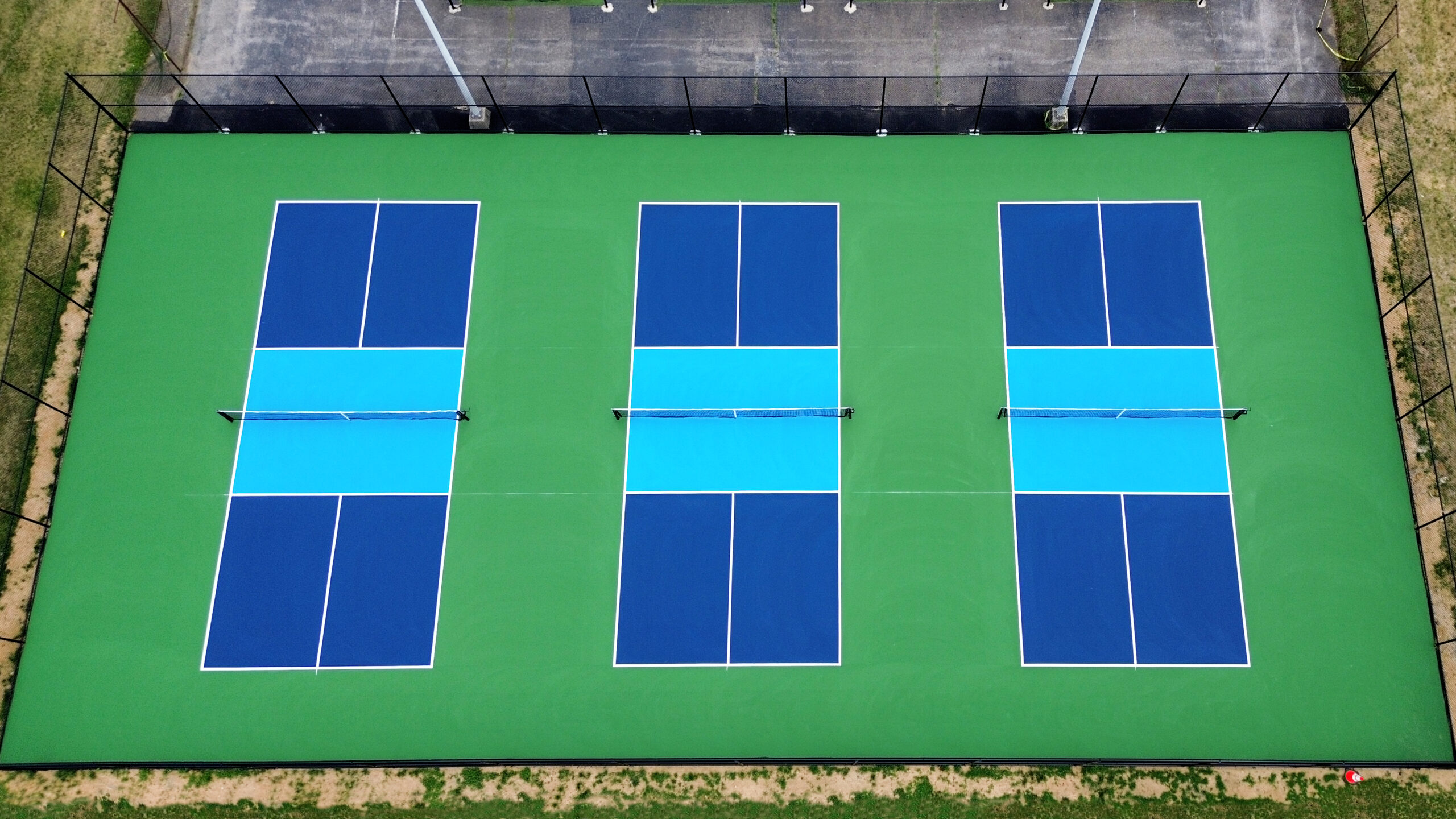High-grade Pickleball Court Construction for each Degree of Play
High-grade Pickleball Court Construction for each Degree of Play
Blog Article
Lasting Practices in Pickleball Court Building You Ought To Know
As the popularity of pickleball remains to climb, so as well does the need for lasting techniques in court construction. This strategy not only addresses environmental worries but additionally improves the long life and functionality of the courts. From picking eco-friendly materials to applying efficient water drainage and energy-saving lights solutions, there are various methods to think about. The influence of these methods expands much beyond the court itself. Recognizing exactly how each aspect contributes to a much more lasting future welcomes even more expedition right into the elaborate balance in between leisure development and ecological stewardship.
Choosing Eco-Friendly Materials
Choosing environmentally friendly materials is an essential step in the building of sustainable pickleball courts. The choice of sustainable products not just decreases ecological influence yet additionally boosts the durability and efficiency of the court. Key materials include reused rubber for the surface area, which supplies exceptional toughness and shock absorption while diverting waste from landfills.
In addition, making use of locally sourced materials decreases transportation discharges and sustains regional economies. Pickleball court construction. Making use of indigenous woods for fencing and seating can supply a sustainable visual while guaranteeing strength versus the elements.
Integrating absorptive products for court foundations can better add to sustainability by enabling natural water drainage and reducing overflow. These selections not only secure local ecosystems however additionally advertise healthier play atmospheres.
Reliable Drainage Solutions
While the selection of eco-friendly materials is necessary, applying efficient drainage services is similarly essential for preserving lasting pickleball courts. Proper water drainage not just shields the court surface from water damages however likewise lessens erosion and drainage, promoting ecological honesty.
Reliable water drainage systems can consist of permeable paving, which allows water to infiltrate the ground instead than merging externally. This reduces the probability of standing water, which can lead to mold and mildew and various other upkeep problems. Additionally, incorporating tactically placed drainage networks and swales can guide excess water far from the court location, making sure a dry having fun surface and preventing dirt disintegration.
Utilizing indigenous greenery in the landscaping around the courts can even more improve drain by soaking up excess water and decreasing drainage. These plants require much less irrigation and advertise biodiversity, straightening with sustainable methods.
In addition, it is critical to on a regular basis preserve the water drainage system to guarantee its lasting efficiency. This consists of clearing debris and tracking for obstructions. By focusing on efficient drain solutions, pickleball court producers can substantially add to the sustainability and durability of the center, ultimately benefiting both players and the environment.
Energy-Efficient Lighting Options
As the demand for pickleball remains to expand, integrating energy-efficient lights options right into court layout has come to be significantly essential for sustainability. Standard lights systems often take in extreme power, adding to higher operational expenses and ecological impact. For that reason, taking on modern-day, energy-efficient modern technologies is vital for both brand-new building and constructions and renovations.
LED (Light Emitting Diode) lighting sticks out as a leading option due to its longevity and power financial savings (Pickleball court construction). Contrasted to conventional lights, LEDs make use of about 75% much less energy and can last as much as 25 times longer, substantially decreasing upkeep costs. Moreover, the directional nature content of LED lighting lessens light contamination, ensuring that illumination is concentrated on the court instead than surrounding locations.

Sustainable Surface Area Alternatives
Exploring sustainable surface area choices for pickleball courts has obtained traction among players and building contractors alike. The focus on green products not only lines up with the expanding ecological awareness however likewise boosts the performance and resilience of the courts.
This product offers excellent shock absorption, lowering the threat of injuries for players while advertising sustainability. These floor tiles are easy to replace and mount, and their convenience allows for different court configurations.
All-natural grass courts are likewise emerging as a lasting selection, advertising biodiversity and reducing the warmth island effect. However, they require regular maintenance and water, which may not align with all sustainability goals.

Water Preservation Methods

Another efficient method includes the setup of rain harvesting systems. These systems save and collect rain for use in preserving court surfaces and landscaping. This method not only preserves safe and clean water yet additionally lowers reliance on local sources.
In addition, utilizing drought-resistant landscaping around the courts is crucial. Indigenous plants require much less water and are better adapted to regional climate conditions, hence decreasing general water consumption. In addition, using effective watering systems, such as drip watering, guarantees that water is provided straight to plant roots, minimizing dissipation and waste.
Conclusion
Including sustainable methods in pickleball court building and construction substantially adds to environmental preservation and source performance. By prioritizing these practices, the building of pickleball courts can straighten with more comprehensive ecological objectives while promoting long life and functionality within neighborhoods.
As the popularity of pickleball continues to increase, so as well does the requirement for lasting practices in court building and construction.Choosing environmentally friendly materials is an essential step in the building of lasting pickleball courts. By focusing on energy-efficient lights choices, pickleball court producers can contribute to a much more sustainable future while satisfying the requirements of stakeholders and gamers alike.Integrating sustainable surface area choices not just enhances the performance of pickleball courts but additionally leads the means for carrying out efficient water conservation strategies.Incorporating lasting methods my company in pickleball court building dramatically contributes to ecological preservation and source efficiency.
Report this page